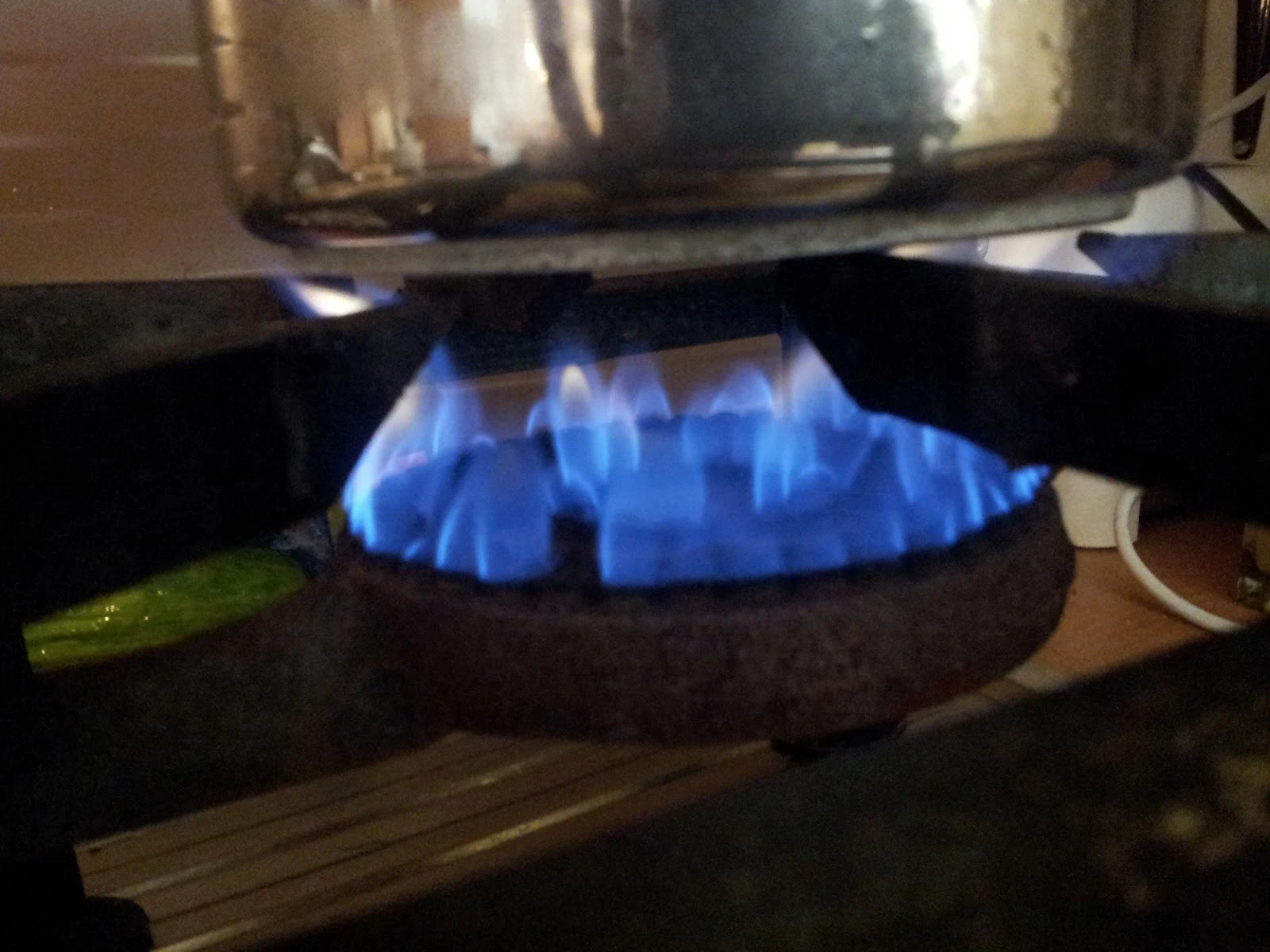It really is just two plastic barrels, one inverted inside the other,
with three pipes -- one to get the food in, one to take the liquid
fertilizer out and one at the top to deliver the gas to your cookstove
or generator. 1000 liter tanks should get you about 2 hours of cooking
gas a day if you live in a warm climate.
Cows eat food, not manure, and the
bacteria in the cows
stomach and intestines also eat that food, mixed with saliva and water.
The goal is to replicate the inside of a cow's digestive tract to help
the bacteria get the most energy from the food.
We only use the
dung/manure to"innoculate" the system on the first day because it is the
easiest non-invasive way of getting the "bacterial biogas experts" out
of the animals' guts and into the tank.
In many respects making biogas is similar to making yoghurt. If you have
a friend who has an active culture of methanogens from their own biogas
digester (or from a septic tank, or from their baby's diaper
just put them in. If you don't use manure, however, I'm not sure what
or how much to feed them in the beginning.
Start up:
- The process working with mesophils from animal dung, however, is started
very simply by taking about 40 or 50 kg (maybe 4 to 6 10 or 15 liter
buckets) of manure (we used horse manure in Germany, cow manure in
Egypt, but any manure will do) and mix it into the bottom container with
water (this is per 200 liters of water but we just go ahead and fill
the whole thing even up to a 1000 liters of water; it may make the wait
time for first flammable gas a bit longer as it takes the bacteria time
to reproduce and fill that volume, but it worked fine for us as we
didn't want to haul in more manure.). Then put the top barrel on and
open the top valve so all the air escapes and the top barrel sinks down
into the bottom barrel all the way.
- You then close the valve at the top so no air can get in and just let it
sit there for anywhere from 2 weeks to a month (depending on climate).
During this boring period the bacteria will multiply. At first they will
just produce CO2. After a few weeks open the valve and flame test with
a candle (we didn't use a flashback arrestor! Doh! :) ) . The first
couple of times the escaping gas will blow out the candle. Eventually,
after a few days, the methane content will exceed 50%.
- Once the gas starts to burn you can start feeding your digester ground
up food waste (mixed in a blender with water, about 1 to 2 Kg a day, but
start slowly so as not to overwhelm the bacteria; start with 200 grams
then 400 the next day etc.). Soon the CH4 content at the top of the tank
will exceed 60% (since CO2 is water soluble it can get up to 70%) and
can be directly used in cook stoves and engines. Hope that helps
explain it. It works well and is fairly simple you'll find. Give it a
try !
Note:
Remember you only have to put the manure in THE VERY FIRST DAY. After this no more manure is needed.
The current process of biomethanation, which uses feedstocks like
cattle dung, human feces, distillery effluents etc. is highly
inefficient, because the nutritionally available calories and nutritive
value of those substances is quite low.
ARTI developed in 2003 a new biogas technology which uses high calorie
feedstock, consisting of
starchy or sugary material. This material is
capable of producing about 250 kg of methane per ton of feedstock (on a
dry weight basis) and the reaction takes only 1 day to complete. In the
case of a household biogas system, application of daily just 1 kg of
feedstock is enough to provide a family with sufficient biogas to cook
all the meals. The material that can be used as feedstock in the new
biogas system consists of
waste grain, seed of any plant species,
oilcake of non-edible oilseeds as well as
nonmarketable or nonedible
fruits (wild species of ficus, overripe mango and banana). Even the
flour mill can be used as feedstock.
Read full story here:
http://solarcities.blogspot.com/2009/09/animation-of-simple-telescoping-biogas.html





